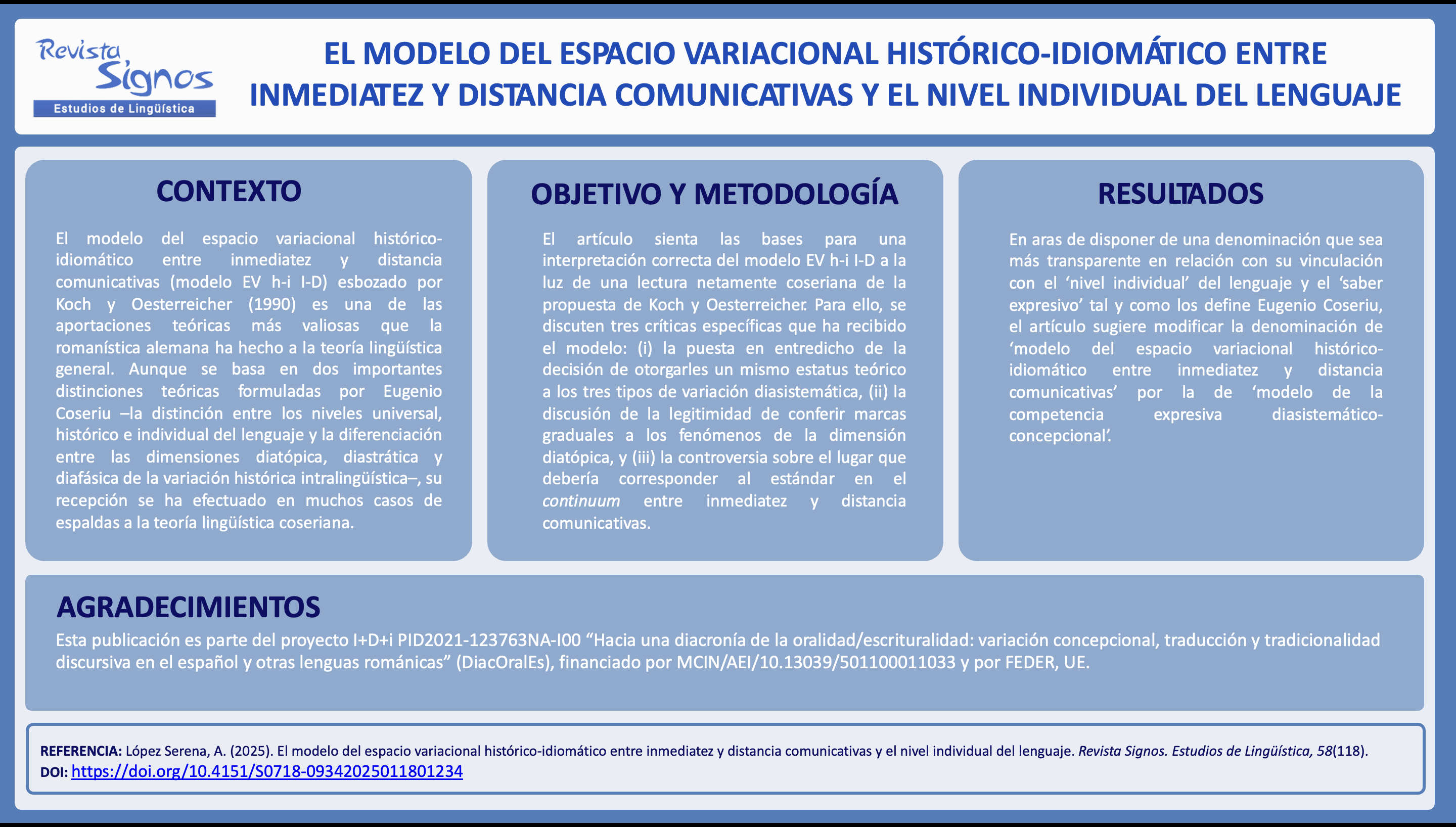The Historical-idiomatic Variational Space Between Communicative Immediacy and Communicative Distance and the Individual Level of Language
DOI:
https://doi.org/10.4151/S0718-09342025011801234Keywords:
variación lingüística, variedades del español, variedades de la lengua, plurinormativismoAbstract
The model of the historical-idiomatic variational space between communicative immediacy and communicative distance (h-i VS I-D model) outlined by Peter Koch and Wulf Oesterreicher in 1990 is one of the most valuable theoretical contributions that German romanistics has made to general linguistic theory. Built on two important theoretical distinctions formulated by Eugenio Coseriu – the distinction between the universal, historical and individual levels of language and the differentiation between the diatopic, diastratic and diaphasic dimensions of intralinguistic historical variation –, its reception has, in many cases, been made regardless of Coserian linguistic theory; Hence, it has not always been realized that the differentiation between the historical and the individual level, as well as the conception of the h-i VS I-D model as a model of expressive knowledge and, therefore, of the individual level of language, are indispensable if a correct and truly productive interpretation of the model is to be achieved. This is precisely the purpose of the present paper: to lay the foundations for a correct interpretation of the h-i VS I-D model in the light of a purely Coserian reading of Koch and Oesterreicher's proposal. To this end, three of the most recent criticisms of the h-i VS I-D model are specifically discussed: (i) the questioning of the decision to grant the same theoretical status to the three types of diasystematic variation (diatopic, diastratic and diaphasic), (ii) the discussion of the legitimacy of conferring gradual marks to the phenomena of the diatopic dimension, and (iii) the controversy over the place that should correspond to the standard variety in the continuum between communicative immediacy and communicative distance.

Published
How to Cite
Issue
Section
License
Copyright (c) 2025 Revista Signos. Estudios de Lingüística

This work is licensed under a Creative Commons Attribution 4.0 International License.
Copyright agreement:
Authors who have a manuscript accepted for publication in this journal agree to the following terms:
Authors will retain their copyright and grant the journal the right of first publication of their work by means of this copyright agreement document, which is subject to the Creative Commons Acknowledgment License that allows third parties to share the work provided that its author and first publication in this journal are indicated.
Authors may adopt other non-exclusive license agreements for distribution of the published version of the work (e.g., depositing it in an institutional repository or publishing it in a monographic volume) as long as the initial publication in this journal is indicated.
Authors are allowed and encouraged to disseminate their work via the internet (e.g., in institutional publications or on their website) before and during the submission process, which can lead to interesting exchanges and increase citations of the published work (read more here).


